Last updated on March 25th, 2022
A nation with a complex history, a unique culture and way of life, as well as significant achievement, Poland is perhaps one of the most interesting countries in Europe and across the world. Below, we explore 50 interesting facts about Poland.
1. Of the 44 countries in Europe (Russia included), Poland ranks as the 9th largest in size. Excluding Russia, Poland ranks as the 8th largest country in Europe.
2. Compared with the rest of the world, Poland is the 63rd largest country in the world.
3. The name “Poland” (called “Polska” in Polish) is derived from the tribe name Polanie. The word Polanie means ‘people living in open fields.’
4. Poland is the second country in the world to develop a constitution. Poland’s first written constitution was adopted in 1791 during the Spring.
5. As intimated prior, Poland’s history is a complex one. As such, even though Poland was the second country in the world to develop its constitution, this document was only functional for a period of only 14 months and three weeks.
6. Poland spent over 100 years of its history in partitions and territorial wars. The reality of territorial wars is exactly why Poland’s first constitution was so short-lived in effect.
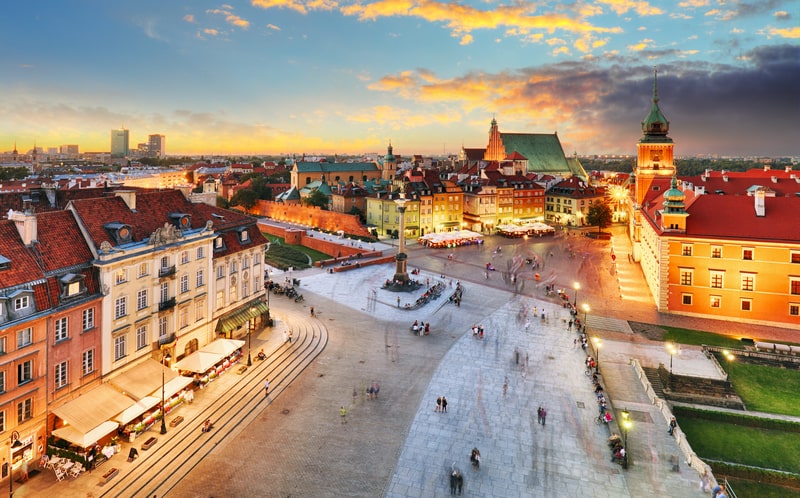
7. Poland’s constitution is not the nation state’s only brush with pioneering achievements. Polish engineer Ignacy Lukasiewicz is credited with inventing the modern kerosene street lamp. This invention is still used on a street in Warsaw until this day and was first used in Lviv Ukraine.
8. The city of Warsaw was almost completely destroyed during World War 2 and was rebuilt after World War 2.
9. Warsaw was rebuilt using Bernardo Bellotto’s 14th century paintings as a visual guide for the look and feel of the town. It is for this reason that the town today looks like it did in the 14th century versus a 20th century town (which is the time period during which it was rebuilt).
Poland on map
10. Born Marie Sklodowska, Marie Curie (the first woman to be credited with winning a Nobel Peace Prize) is of Polish heritage and not French. For all intents and purposes she became French through marriage to Pierre Curie.
11. Like Marie Curie, noted novelist Joseph Conrad is Polish in his heritage. His given name was Teodor Jozef Konrad Nalecz-Korzeniowski.
12. Poland is home to a whopping 16 World Heritage Sites.
13. The Polish landscape is very diverse in nature. The landscape is rich with beaches, mountains, deserts, lakes, and forests, including mountain chains and almost 800 km of the seashore.
14. Further adding to its diverse natural landscape, Poland is home to the only desert located in Central Europe. This desert is named Pustynia Bledowska.
15. The Pomerania region of Poland is home to the dunes which are among the most popular tourist hot spots. Other popular attractions include islands and wetlands in the Wolinksi National Park and Bierbrzanski National Park, respectively.
Flag of Poland
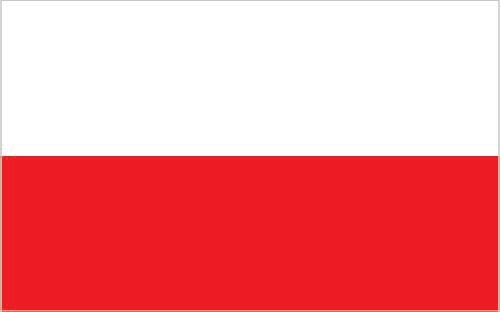
16. Traditionally, Polish last names end with ski/ska or cka/cki, depending on the sex of the individual. For example, the daughter of Mr. Kowalski will be referred to as Miss Kowalska.
17. Measuring 646.38 meters (approximately 2,120.7 feet) and before its collapse in 1991, the Warsaw radio mast (located in Konstantynow) was the world’s tallest structure. After the Burj Khalifa which was completed in 2010, the Warsaw radio mast became the second largest structure ever built.
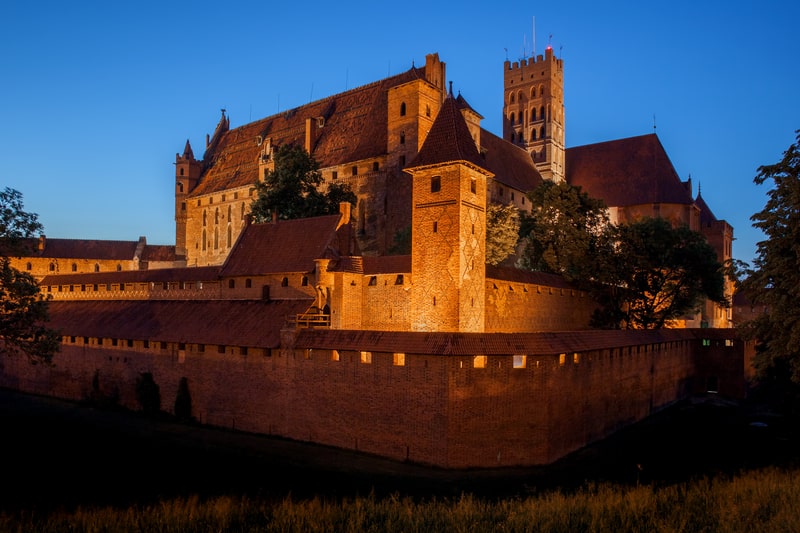
18. Speaking of the tallest, Poland is also home to the Malbork which is officially the biggest castle in the world as measured by single area.
19. Be it inside a church, someone’s home, or other building, the older generation of Polish natives find it rude to wear a hat indoors. The younger generation is a lot more open, however, and do not hold tightly to this behavior as a sign of disrespect.
20. While today’s generation of Poles may hold loosely to some habits and traditions, chivalry is still observed and viewed in primarily traditional ways. Kissing a woman’s hand, for example, is still popularly observed. Polish men will do this even upon the first introduction.
21. A ‘water war’ is a thing that’s observed on Easter Monday in Poland. Known as Smigus Dynus, Easter Monday is that day of the year when boys and girls play fight using a mixture of water guns, buckets, and pussy willow branches.
22. In Poland, the names of Saints are associated with days in the calendar. This is done to facilitate a tradition known as name day.
23. Name days (also known as imieniny) are celebrated with the same amount of fanfare and even more reverence than birthdays. Name day is the day commemorating the Saint that one is named after.
24. Foreign movies are dubbed on Polish TV. This is nothing strange really, except that the voice-overs for all the actors and parts is done by one single man reading all the parts.
25. As if having a man read all the parts of a movie (including the parts of women and children) is not weird enough, it is also true that you are likely to hear the first few seconds of the original sound each time a character begins to speak, as well as continue to hear the original sound faintly in the background.
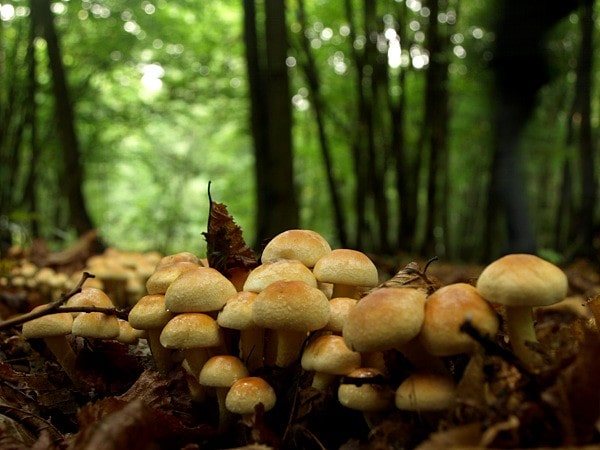
26. Picking wild mushrooms at the end of summer is a popular family activity for Poles. This activity is used to teach children to differentiate between edible and poisonous mushrooms.
27. White lilies, chrysanthemums, and red carnations are reserved exclusively for use during funerals and should not be purchased for any other occasion.
28. When purchasing floral arrangements for a funeral, it is important to remember not to purchase an even number amount. This is considered an absolute no-no.
29. Opened in 1275, the Piwnica Swidnicka is the oldest restaurant in Europe. The same is located in Wroclaw, Poland.
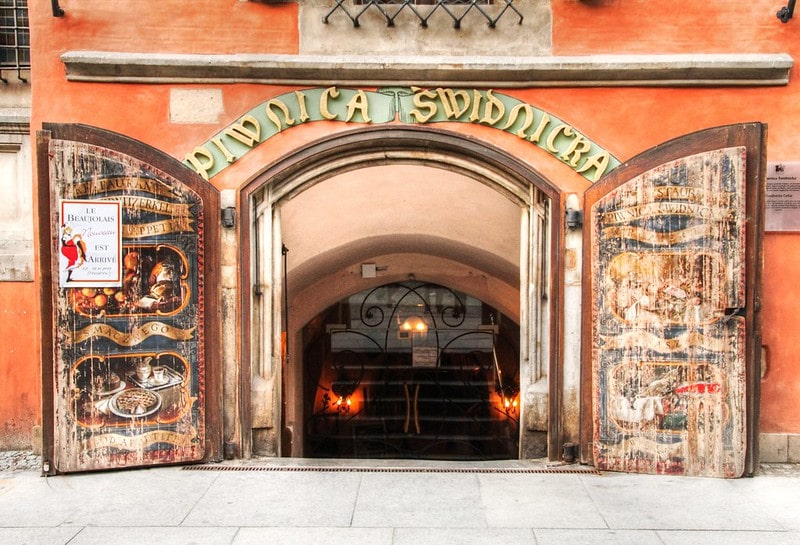
30. At the Piwnica Swidnicka and other popular restaurants, popular Polish foods like the Zapiekanka can be enjoyed. The Zapiekanka is considered an unofficial traditional food and can be likened to an American ‘sub’ sandwich. It is made from half a baguette and is topped with garlic, ketchup, mayo, mushrooms, and cheese.
31. The Polish man Julius Fromm invented the first latex condom.
32. Although invented so long ago and by one of their own, contraceptives like the latex condom are still a hot topic discussion for Polish politicians.
33. Although much of Europe is secular in its expression today, Poland is still one of the continent’s most religious countries. Catholic TV and radio are very popular across the country.
34. As popular as religion is in Poland (particularly the Catholic religion), it is hardly surprising that there is no real separation of church and state in Poland.
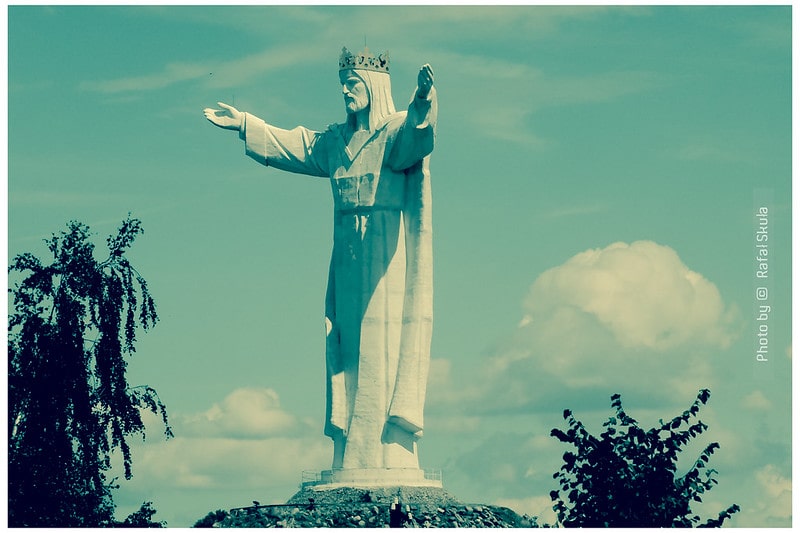
35. Still on the topic of religion, Poland is home to the tallest Jesus statue in the world. This is perhaps the Poles’ most treasured achievement among their other ‘tallest’ and ‘biggest’ achievements.
36. Unlike the rest of the world that celebrates Valentine’s Day on February 14 each year, Poland has its own special day of love. Valentine’s Day (or Kupala or Wianki as it is also called) is celebrated on Summer Solstice. That is, on June 21 of each year.
. . . continue reading on the next page
